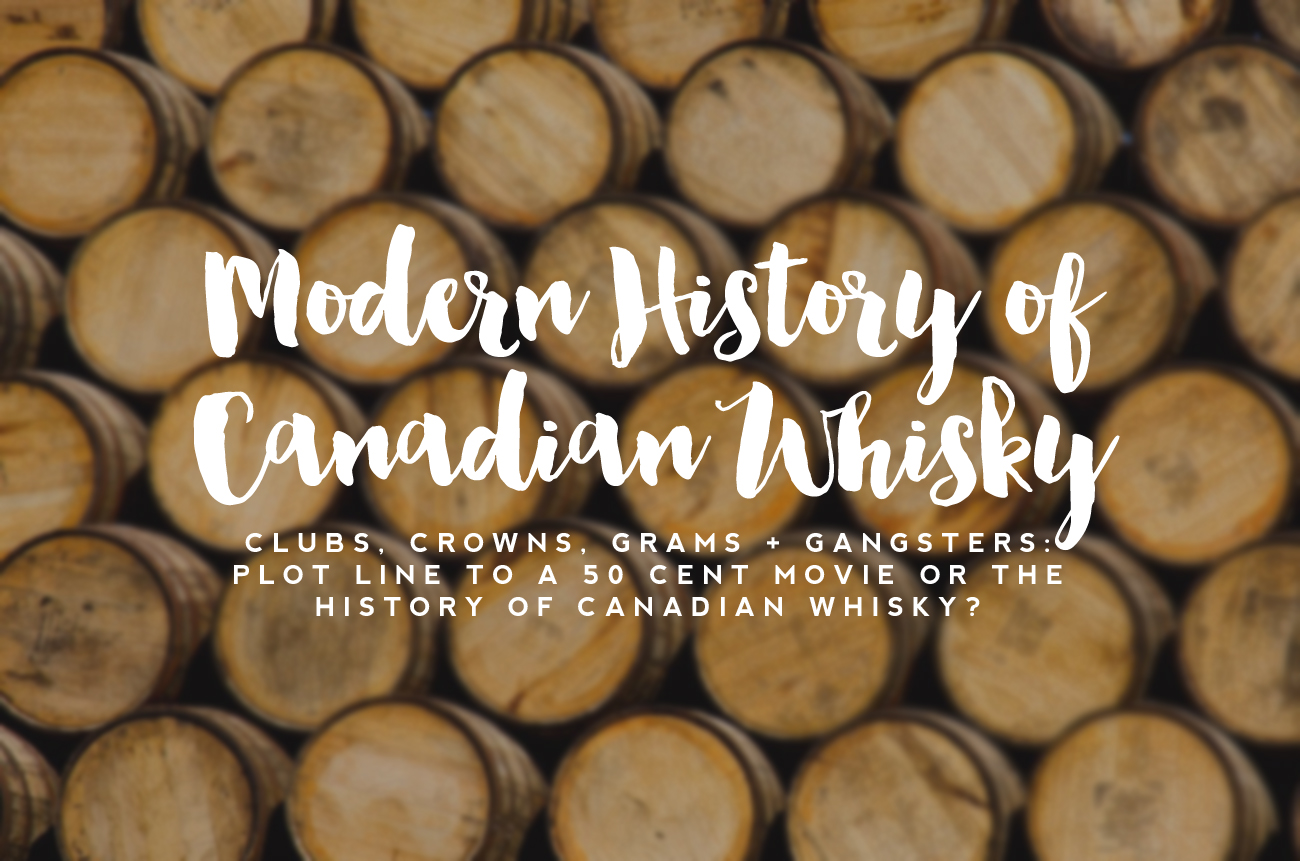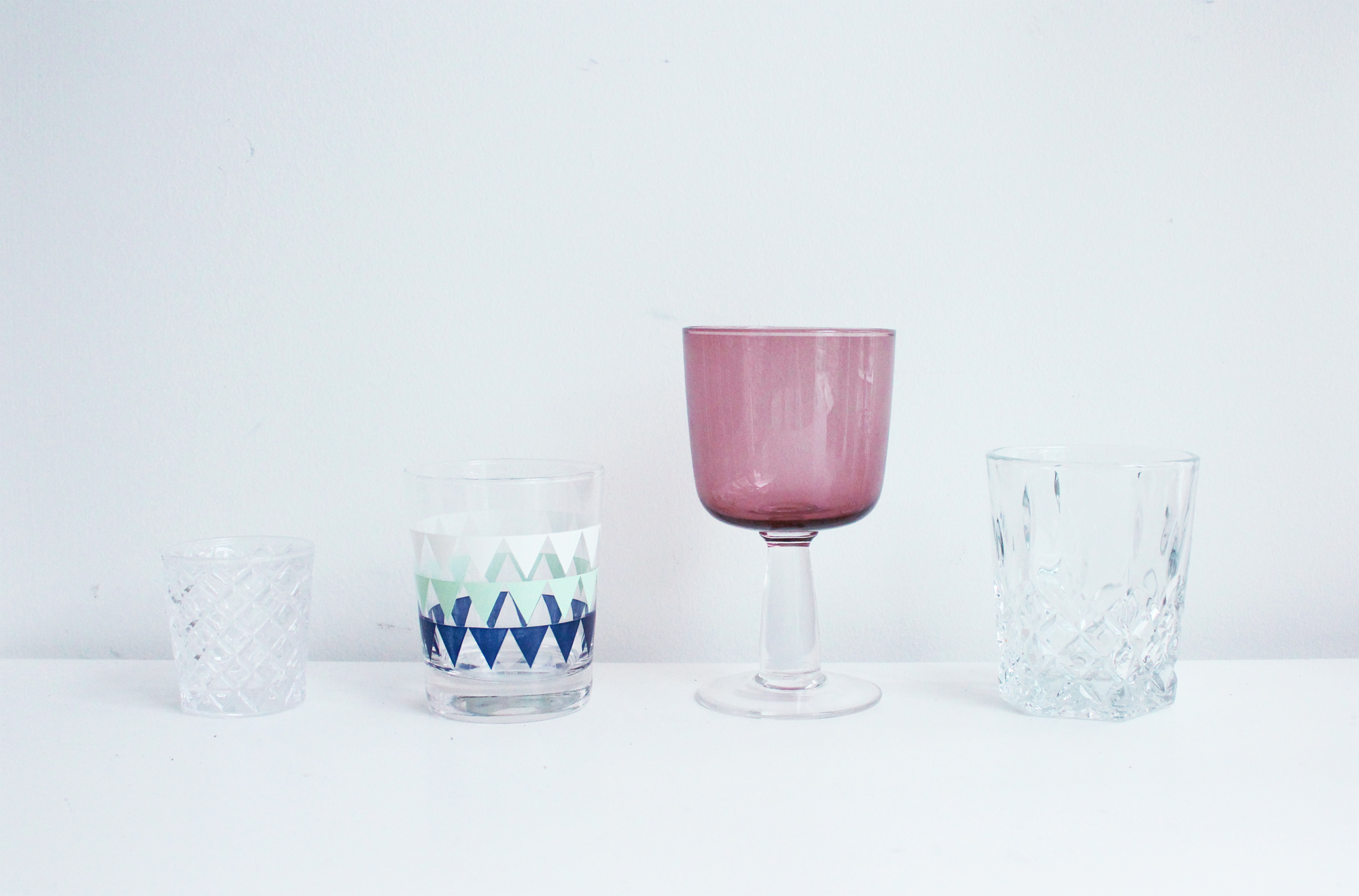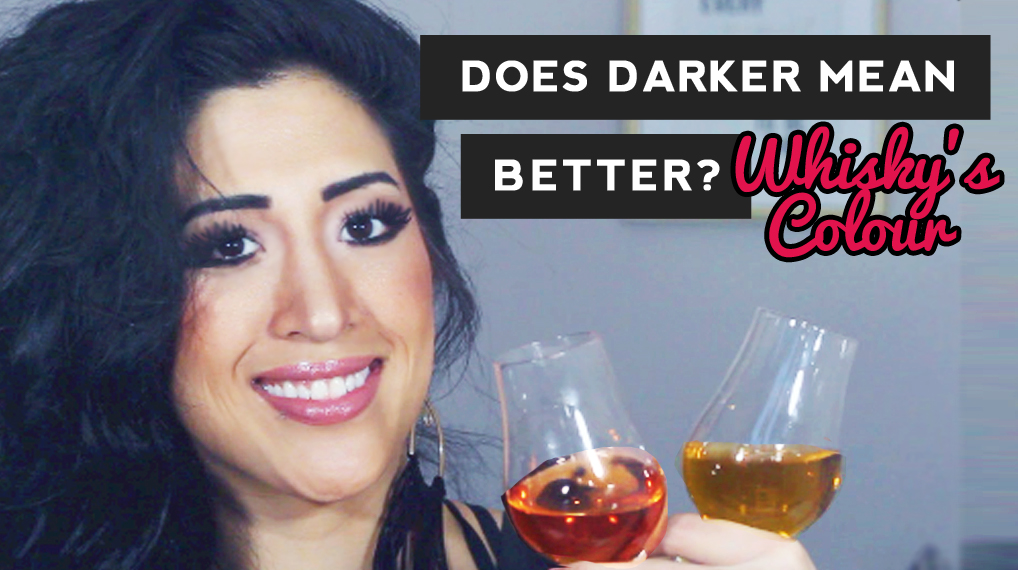Clubs, Crowns, Grams + Gangsters: Plot Line to a 50 Cent Movie or the History of Canadian Whisky?
In short, possibly both.
Rivalries, albeit real, pop-culture driven or fictional have been documented, revelled and revolted over time. The Montagues and Capulets, Starks and Lannisters, Bloods and Crypts, Batman and Superman, have created polarizations throughout history that have gained both infamy and mainstream notoriety. But little do people know about the rivalry between the two whisky empires upon which Canada’s rye whisky industry was founded.
While today, neither family still rules their respective empire, Hiram Walker and the Seagrams/Bronfmans were seen as the founding families of the Canadian whisky industry and have been pivotal in shaping the vibrant industry that exists today. While this overview of Canada’s Whisky is widely over generalized, it serves as starting point for an industry that has become weaved throughout the social fabric of Canada’s history.
You Can Find Me In Da ‘Club’
In 1858, after living in Detroit for a few decades, American entrepreneur Hiram Walker purchased land across the Detroit River (near Windsor, Ontario) and established a farm and distillery. Walker began producing and selling his signature “Club” whisky, which grew in demand due to his marketing ingenuity. You see, before Walker, other distilleries would simply sell/serve their whiskies in the barrels in which they were aged. Walker, however, had the profound idea to bottle and label his whiskey as “Hiram Walker’s Club Whisky” and resultantly- as the kids say these days — that shit went went viral, quickly becoming popularized around the world and putting Canada on the map as a “legit” whisky producer. Naturally, Club Whisky became the go-to tipple among da (Gentlemen’s) Clubs and niteries.
Due to Club Whisky’s newfound success the distillery expanded making the “middle of nowhere” land which housed the distillery and farm into a central hub for a growing town. The town grew with the majority of housing, career paths and services being managed by Walker in order to serve his booming business. With the sudden increase in population and amenities this suburb was deemed an independent city and was given the name Walkerville. It’s one thing to have a restaurant (think: Wahlburgers) or nut (think: Macadamias) named after you, but an entire city? That’s… wait for it… legendary.
One, Two, Three Strikes… You’re In?
So to recap, Walker had a city named after him and his “Club Whisky” became as big of a hit as 50 Cent’s “In Da Club.” Walker was crushing it which made US-distillers furious. Enraged by his success, competitors lobbied to change the US liquor regulations to require that all brands bottle and label their spirits with the country from which it was produced. This amendment was intended to hinder sales of a non-US whiskey. These regulations backfired, making the newly renamed “Canadian Club” more popular than ever.
Strike one.
So they tried again. And a few years later passed another law that required bottles to list the maturation length. But once again, this backfired, increasing sales further because many bourbon and American rye whiskies were only matured for a year in some sort of barrel before coming to market whereas Walker aged Canadian Club in premium oak barrels for no less than five years.
Strike two.
Prohibition started in January 1920 and alcohol was outlawed in the US until 1933. While alcohol could not legally be sold, they were still available through smuggling it across the border. Thanks to good O’Canada, where whisky was still legal, many bootleggers brought whisky into the US. For Harem Walker, this meant even more sales of Canadian Club because competition was nearly extinct. Among notable clients was notorious gangster Al Capone who smuggled thousands of cases of Canadian Club from Walkerville to Detroit on a weekly basis.
Strike three.
Crowns + Grams
Around the same time as the establishment of Walker’s whiskey in 1857, another distillery was built in Waterloo, Ontario by Joseph Seagram and his family. Years after its establishment and after the passing of Seagram, the distillery was purchased by Samuel Bronfman’s Distillers Corporation Limited.
Bronfman and his family immigrated to Canada from Russia after making their fortune in growing and selling tobacco. After moving to Canada and realizing that the climate didn’t suit growing tobacco, Bronfman needed to diversify. So what was the next best thing to selling tobacco? Alcohol of course. Bronfman created Distillers Corporation Limited which, as mentioned, acquired the Seagrams distillery in 1928. Over the duration of the remainder of the prohibition era, Bronfman’s used his colourful personality and business acumen to increase the sales and reputation of the Seagram’s brand.
Once the prohibition ended (oh, and a number of allegations of criminal activity were rescinded), Bronfman recognized that the whisky industry needed an extreme makeover. Determined to shift what was once the infamous moonshine of gangsters to the sophisticated nectar of the gods (or, well, royalty at least), Seagrams began to expand their portfolio with new products including Crown Royal. Crown Royal was released the year that King George VI and Queen Elizabeth. What Seagrams coined as a “tribute” to the royal visit, I’d coin as a strategic marketing tactic. Nevertheless, over time Crown has become the top selling Canadian whisky in the US.
Although Crown has become the top-seller, the Seagram’s brand has undergone an interesting growth and decline culminating in the Seagrams portfolio dissolution in 2000.
The Rise and Fall of An Empire
To backtrack slightly, after the prohibition and decades of continued growth of the Seagrams brand the company decided diversify. Sure they started selling sodas, wines, other spirits but they also acquired a large share of Conoco, which sounds like a coconut liqueur but was actually a major US oil and gas company, which lead to a stake in chemical company DuPont as well as a majority share in the Music Corporation of America (MCA) and it’s assets (which include Universal Pictures and its theme parks).
It appeared that Seagrams was killing it — they possessed a portfolio of 250 drink brands and brand extensions as well as stakes and shares in other high-profile companies. But in 2000, Bronfman Jr (who was appointed CEO in 1994) began to sell shares of Seagrams. French conglomerate Vivendi created a shares agreement and merger with the Bronfman family and their liquor properties were sold to Diageo and Pernot Richard and many non-alcoholic beverages to Coca Cola. The new merger, while great on paper, proved to be an unstable venture and almost immediately started bleeding money. Long story short, shares in the company went from $77 to $25 in less than a year. Most of the remaining Seagrams assets and infrastructure were liquidated to pay off the debts.
Where Are Ü Now?
As noted above, in the words (or rather lyrics) of fellow Canadian Justin Bieber, today, Canadian Club, Crown Royal and to a lesser extent Seagrams have continued to be recognized, resilient and relevant.
A combination of well executed branding and advertising campaigns including Canadian Club be the drink of choice for Mad Men and Boardwalk Empire, Crown making a royal appearances in the queens of pop, JLo’s music videos, Crown’s Northern Harvest blend being named the Whiskey Bible’s 2016 whiskey of the year as well as a bevy of other factors, the Canadian whisky industry continues to thrive.
Now I’m wouldn’t say I’m a nationalistic person normally, but for this, I say to my fellow Canadians, take a moment to put on your hockey jerseys, get a Timmy Ho’s, mix yourself a Canadian Coffee (think Irish Coffee but with rye + Tim Horton’s coffee) grab the nearest hoser and say “Cheers” to Canadian whisky being the best selling whiskey in North America and Canada being one of the top whisky producers in the world.





